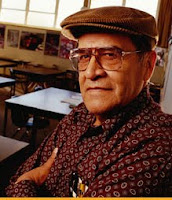Some thoughts from our Grant Coach, MaryEllen Bergh, on schools and collaboration:
The Full-Service Community Schools Program Grant application has just been released so my thoughts have turned, once again, to the fact that schools just can’t take on all the problems of today’s children and their parents and, at the same time, focus on turning around a school labeled as “failing.” Schools need other agencies to share some of the responsibility.
Imagine a community school intentionally transformed into a neighborhood hub – open all the time to children and their families and, in this school, a range of support services is provided by community agencies to help students overcome the obstacles that interfere with their learning and success in school.
In order to create this system of comprehensive, coordinated support in a community school model, schools have to learn to work in different ways. Schools have tended to be isolated to a significant extent from direct intervention of other professionals; where they have had to work with other agencies, their relative size, statutory nature and high degree of control over what happens within their walls have often made them difficult partners (and I know many community non-profits working with children at school sites can attest to that!).
Educators and human service providers traditionally have been on different tracks. To collaborate, schools (and agencies) must be willing to negotiate on issues such as confidentiality, discipline, equipment, and transportation, to name a few. Many large educational initiatives (Safe Schools/Healthy Students, Healthy Start, 21st Century Community Learning Centers) insist on collaboration – often on the school site – and this has shifted the balance from control to cooperation. Principals and teachers realize that they need the cooperation of other professionals in order to reach the standards of performance by which their schools are judged.
Full service community schools are jointly operated and financed by a school district and a community-based organization. Each community school is unique based on what the neighborhood needs. Does the full service community school work? Preliminary research shows improved achievement, much better attendance rates, lower delinquency, and significant student and parent approval. Joy Dryfoos (well-known researcher and advocate of full service schools) states that the full service community school is a strategy – not a program – for “redesigning education to meet the needs of a modern, dynamic society.”
Learning to collaborate is a critical key in successful community schools. Collaboration benefits schools and community organizations in several ways:
- Working as a
team leads to improved effectiveness, more efficient use of resources, better access to services and more productive partnerships; - When schools and community based organizations cooperate to align resources with common goals, children and youth are more likely to succeed academically, socially, and physically;
- Collaboration among professionals provides opportunities to enlarge and deepen practice as school staff and community organizations learn from each other; and
- Much more can be accomplished for children and families as a
team than can be accomplished by any one organization in isolation.
Take a look at the Full Service Community Schools Program application.
For more information: Inside Full Service Community Schools, by Joy G. Dryfoos & Sue Maguire.
———————–
Visit GrantGoddess.com for more great tips on collaboration and grant writing!


